Product Description
Harmonic Tracking Resynthesis Reverb
ADAPTIVERB is a revolutionary reflectionsless reverberation plugin. Unlike traditional acoustic room modeling using reflections, ADAPTIVERB focuses on creating depth, harmonic richness, and butter-smooth harmonic tails without obscuring the source or perceptually moving it back. Built using ray tracing reverberation, adaptive similarity filtering, and a revolutionary new AI technique similar to the technology that enables self-driving cars to avoid collisions, ADAPTIVERB can create lush spaces, smooth drones, and far-out textures while optionally filtering dissonance – so it never gets in the way of your sounds.
Reverb, zynaptified
Wouldn't it be cool to have a reverb that auto-magically adapts to your sound and blends with perfection? A reverb that doesn't clutter up your mix, and doesn't push your sounds into the background. A reverb designed to sound beautiful and lush, rather than just realistic. A reverb so organically smooth it's as if your sounds had a longer sustain to begin with. A reverb that loves creating organic ambient sonic textures.
We thought so. Say "hello" to ADAPTIVERB.
Key Features:
- Revolutionary new reverberation approach with unique sonic characteristics
- Bionic Sustain Resynthesis creates stunningly organic tails, eliminating noisy components from the input for clear, harmonic results free of graininess
- Harmonic Contour Filter (HCF) circuit for removing effect components not in tune with the input, a captured harmonic fingerprint, or a set of notes defined using an on-screen keyboard
- Filtering and pitch quantization based HCF Keyboard modes to conform the effect to a specific key
- HCF HOLD mode for creating cross-filtering effects
- Ray Tracing and Allpass based reverb engine
- Input FREEZE function for creating drones, pads or infinite reverb type sounds
- SIMPLIFY function that recreates the input’s harmonic content with a small amount of oscillators for additive synthesis type sounds — without the warbliness
- RICHNESS parameter for adding octave, fifth or unison interval harmonics into the reverb
- Pre-Processing section including harmonic synthesis based AIR
- More than 400 presets covering a broad range of effects, including bread-and-butter reverbs, “invisible” reverbs, instrument-/voice-colored reverbs, cross-filtering, adaptively filtered delays, and pads/drones that play without input signal
- MIDI control of all key parameters
Plug In Lushness
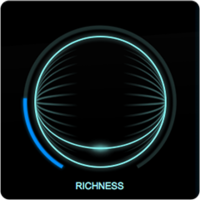
ADAPTIVERB was designed to sound beautifully lush and smooth from the ground up. Rather than simulating a realistic room, it focuses on creating depth, harmonic richness, and sustain that sounds so naturally organic it's as if your sounds had more sustain to begin with. Its unique Bionic Sustain Resynthesizer creates reverb free of graininess or noise splashes, and its Ray Tracing engine creates super-dense and perfectly diffuse tails free of any attention-grabbing discrete reflections.
Our testers have described ADAPTIVERB as "it's just soo MUSICAL!”, "oh boy, does it sound GOOD!" and "I don't use reverbs in general, they always mush up the sound - this one doesn't, and I'm now turning into a reverb LOVER!". We tend to agree with our testers and trust you will too.
You will find ADAPTIVERB works wonders on instruments like guitars, pianos, synthesizers or strings, on speech and vocals, on SFX and location sound, and even on full mixes.
And if you (like us) like Daniel Lanois, Robert Fripp, Ulrich Schnauss or My Bloody Valentine... you'll love ADAPTIVERB.
No Clutter, No Mud, No Dissonance
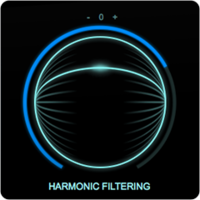
Applying long reverb tails is a great way to "carry" a sound and embed it into a mix. However, the length and amount of reverb you can successfully use for this effect is usually limited. Reverb tends to obscure detail by moving sounds into the background and it can introduce dissonance and tonal clashing when the tail overlaps with a note or chord change. This often results in a cluttered, "muddy" mix that lacks directness and tonal definition.
ADAPTIVERB is always in tune with the input or a user-defined set of pitches, filtering out all unwanted harmonic content from the reverb automatically. Bye bye, mud & clutter – hello, harmonic clarity!
Like a (Bionic) Chameleon
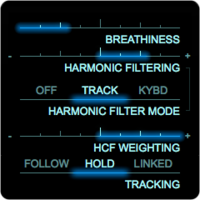
Rather than stacking delay/allpass nodes or convolving the input with an IR (impulse response), ADAPTIVERB employs machine learning, ray tracing and source separation techniques to synthesize a reverb tail that automatically adapts to the audio context in which it is used – like a chameleon. As a result, reverb timbre can be matched to the source automatically, and the reverb can blend with your sounds so seamlessly that it becomes "invisible" with minimal effort – great for adding "glue" in mixing and mastering applications without having to adjust roll-offs, frequency dependent decay times or crossover frequencies manually.
Sound Design Savvy
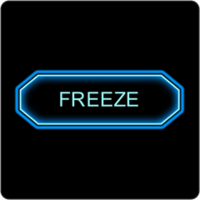
ADAPTIVERB loves sound design. Add fifth or octave interval harmonics into the reverb using the RICHNESS parameter, create additive synth style timbres using SIMPLIFY, create drones and pads that play without input using FREEZE, or create cross-filtering effects with the Harmonic Contour Filter's HOLD functionality – quickly, easily and at maximum quality. Whether you produce music or design sound for film and games, ADAPTIVERB is for you. Read more about ADAPTIVERB's pitch/synthesis, cross-filtering or drone/pad creation features...
Presets Galore
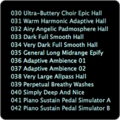
ADAPTIVERB ships with over 400 presets, including basic starting points, music production reverbs, adaptive delays, voice and orchestral colored reverbs, drones, pads, speech-optimized reverbs, cross-filtering presets, robotizers and more. And even this huge number of presets is just scratching the surface of what you can do with ADAPTIVERB!
Easy To Use
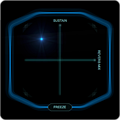
Like with all Zynaptiq products, the heavy lifting stays “under the hood” – making your workflow as effortless as possible. With “main” and “fine tune” GUI modes, ADAPTIVERB’s controls are both highly accessible and comprehensive. And with Zynaptiq’s advanced artificial intelligence, ADAPTIVERB can quite literally “drive itself” – saving you valuable time while producing stellar results. Test drive it now!
In-Depth
Bionic Sustain Resynthesis

At the heart of ADAPTIVERB lies the BIONIC SUSTAIN RESYNTHESIZER, a new type of reverb free of any harshness or graininess, which has no inherent resonant frequencies of its own, and that blends with the source excellently by nature. Built using an AI technique similar to that used to enable self-driving cars to avoid collisions, it synthesizes a reverb tail using a network of hundreds of oscillators that learn to re-create just the pitched/harmonic parts of the input sound. Thus, noise and transients don't enter the reverb, making for organic tails even when working with otherwise difficult material like the master bus or field recordings.
Pitch Processing and Synthesis Parameters
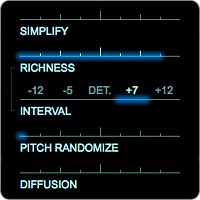
As if that weren't cool enough, we've built in controls for tweaking these oscillators, for timbral manipulation from subtle to...quite dramatic.
SIMPLIFY reduces the number of oscillators the Bionic Sustain Synth uses from hundreds right down to one at the slider's maximum value. The result is a simplification of the timbre that has a distinct "flavor" somewhat similar to that of additive synthesizers. SIMPLIFY does not introduce the typical "warbliness" of additive synthesizers, though, due to the unique design of the resynthesis engine used. SIMPLIFY loves being automated, and works really well for creating ambient sounds.
RICHNESS introduces harmonics of a specified interval into the SUSTAIN SYNTH’s sound, similar to how you might add a pitch shifter in front of or in the feedback loop of a reverb. However, instead of adding pitch shifted copies of the sound in, RICHNESS works by causing oscillators to excite other oscillators that are at or close to the interval specified with INTERVAL, or in other words: *existing* harmonics at this interval are reinforced and no new oscillators are added. This makes for a much more harmonic, organic and transparent sound, and avoids adding pitch shifting artifacts into the effect.
INTERVAL specifies the RICHNESS interval. Available settings are -12, -5, +7 and +12 semitones, as well as a DETUNE setting (10 cents).
PITCH RANDOMIZE adds random pitch modulation to the oscillators, adding an ensemble style shimmer with a very nice characteristic.
Ray Tracing Reverb
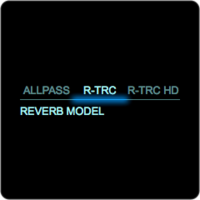
ADAPTIVERB also features an advanced RAY TRACING REVERB module, which creates a very dense and perfectly diffuse reverb, with a beautifully smooth and full sound. Ray tracing reverb works by simulating the paths soundwaves take from a virtual sound source to a virtual listening position in a 3D room model. ADAPTIVERB's AI-based implementation simulates the effects of 16,000 such paths, without explicitly computing individual reflections. The reverb created is linear ("white") across all frequencies – perfect for diffusion of the sound pre-filtered by the SUSTAIN RESYNTH, as well as for post-filtering using the HARMONIC CONTOUR FILTER. ADAPTIVERB's REVERB section also provides a traditional allpass-filter based reverb, and can be fed by the output of the BIONIC SUSTAIN SYNTH, directly from the input section, or a mixture of both – for maximum flexibility.
Harmonic Contour Filter, a.k.a The HCF

The unique HARMONIC CONTOUR FILTER post-processes the output of the preceding sections. Its primary purpose is to remove those pitched parts from the reverb tail that would clash with the input, for example when the source track had a chord-change, or that would create “mud” or obscure the source too much, limiting the amount of reverb that can be successfully used in a mix. The HCF also enables automatically adapting the tail to blend perfectly with the source, or, when applied with negative amounts, suppressing commonalities between the input and the reverb, to “fill just the gaps”. The HCF also features a HOLD function, that allows “freezing” the current filtering effect, so you can apply the timbral/tonal characteristics of one source to the reverb of another, for cross-filtering effects similar to those created with convolution (minus the temporal evolution). And finally, the HCF can be used to selectively conform the reverb tail to a specific set of pitches, under cthe ontrol of a virtual keyboard. See below for more information on these powerful features.
HCF Keyboard Mode
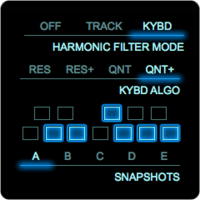
Switching the HCF to KEYBOARD MODE allows conforming the reverb to a user-defined set of pitches, under cthe ontrol of a small on-screen keyboard that features 5 snapshots for chord storage and automation. Simply select which pitches are "allowed", and the entire effect path will conform. Pitch conforming can be done using precision filtering or pitch quantization, removing all unwanted harmonics or shifting them to allowed pitches, respectively. Both methods can be used to process the dry signal, too, by setting REVERB SOURCE and REVERB MIX to minimum values, for very cool sounding effects.
Cross-Filtering With HCF HOLD

Use the HCF HOLD mode to create voice-colored reverbs, guitar flavored delays or other cross-filtering effects. Simply play a sound into the plug-in, and activate the HCF's HOLD function when you hear the timbre you'd like to impart onto ADAPTIVERB's effect path. Then, swap the input signal and cross-filter away! The HCF will extract or remove all components from the input or reverb that are not similar to the HOLD snapshot you took in terms of pitch. This source separation (a.k.a. De-Mixing) based similarity filtering engine is so precise that you can even use it to remove static sounds like hum, single notes or chords from your audio. A very powerful tool for sound design.
Create Drones, Pads & Ambience with FREEZE

Using the input FREEZE it takes just seconds to create stunningly organic, evolving drones, pads and ambient textures, that play even without input and are stored with the preset – effectively turning ADAPTIVERB into a unique ambient texture synthesizer. Unlike other "infinite reverb" type functions that simply recycle the contents of the reverb, in ADAPTIVERB, the actual input signal before the reverb is captured, and resynthesized in a seamless manner that does not sound looped and is free of warbling artifacts typically associated with such functionality. Because of this, all plugin parameters stay active during FREEZE, for your sonic texture sculpturing enjoyment. There are actually two freezers running in parallel, one at the input of the BIONIC SUSTAIN RESYNTHESIZER, and one at the "direct input" of the REVERB section. They have slight differences in terms of sound and what part of the input they capture, and you can mix between both using the REVERB SOURCE parameter. You can, of course, still get a more classic frozen reverb flavor, too, by setting SUSTAIN or the Ray Tracing REVERB's SIZE parameter to maximum.
System Requirements
Mac
- macOS 10.12 or newer (M1 Apple Silicon Macs supported via Rosetta) (32 / 64-bit)
- Intel CPU with at least 2 Cores; i7 or better recommended, Apple Silicon supported via Rosetta 2
- AU, VST 2.4, VST 3 or RTAS/AAX compatible Host software (processing audio as 32-bit float)
- For AAX Native 32-bit (Pro Tools 10.3.6 or higher is required)
Note: macOS versions from 10.8.5 onwards may work but are not tested in-house nor officially supported.
Windows
- Windows 7 or newer (32 / 64-bit)
- Intel CPU with at least 2 Cores; i7 or better recommended, Apple Silicon supported via Rosetta 2
- VST 2.4, VST 3 or RTAS/AAX compatible Host software (processing audio as 32-bit float)
- For AAX Native 32-bit (Pro Tools 10.3.6 or higher is required)
Important Notes:
- An iLok account or iLok 2-based activation is required in order to register this product
- An internet connection is required for software activation
Copy Protection
Zynaptiq products use the latest PACE copy protection, which allows you to place your activation on your machine or on an iLok 2* (not included). You will need a free iLok.com account to use our software, even for the demos - but you do not necessarily need the iLok 2 dongles if your machine has internet access (activation of a system without internet connectivity requires an iLok 2 device). All required software is installed along with our plugins, but we generally recommend downloading the latest versions directly from iLok.com.
Please Note: The older, first-generation iLok is not supported!
CPU Load
While they are highly optimized, Zynaptiq plugins use a LOT of CPU due to the complex nature of the magic they perform. Please use the free trial to evaluate whether your system has sufficient resources to utilize the software effectively!
Zynaptiq recommends setting your playback buffer size to at least 512 or ideally 1024 samples for optimum performance.
As Zynaptiq plugins sport unique features not found in any other software, Zynaptiq highly recommends reading the User Manuals to ensure that you get the most out of them!
View Installation Instructions
Installation Instructions
Before beginning installation/authorisation you're required to download the iLok Licence Manager and create an iLok account.
If you do not have an iLok account, please visit https://www.ilok.com/#!registration to create a free account and https://www.ilok.com/#!license-manager to download the iLok Licence Manager.
1. Log into your Plugin Boutique account (My Account > My Products), to obtain your serial code.
2. Click the link HERE to register your personal details and serial (registration code). Click 'Submit.'
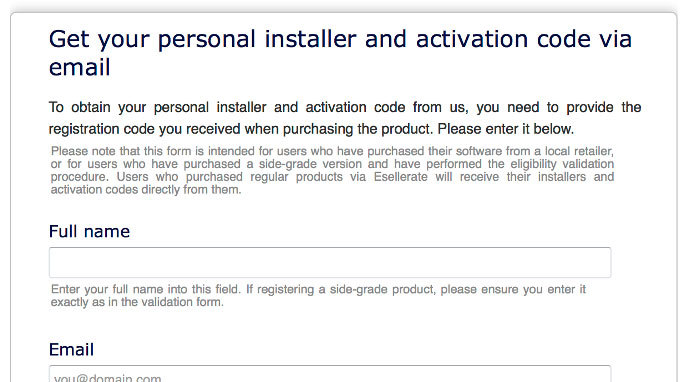
3. you will then be email has been sent to the email address you used to register with.

4. Log into your email account, where you can access your activation code and download link.

5. Follow the relevant Download Link from your email (Mac/PC) to start downloading your new contents installer.
Please note: If you are on a PC, you must extract the downloaded '.Zip' file (right-click Extract All) BEFORE attempting to run the included installer.
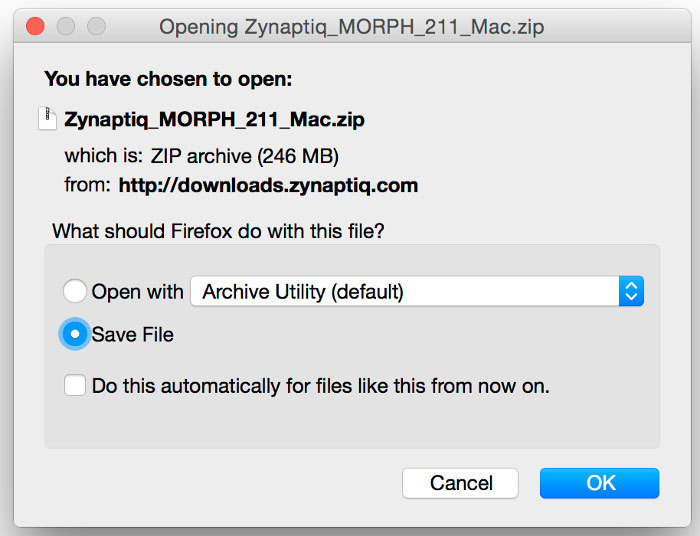
6. When you run the installer file, you will need to follow the on screen prompts; please leave the installer to place the plug-in files into the default location.

7. Once you have finished installation, launch your host/DAW. If your software does not scan upon launch, simply open your plugin within. You will be prompted to activate. Click 'Activate'.
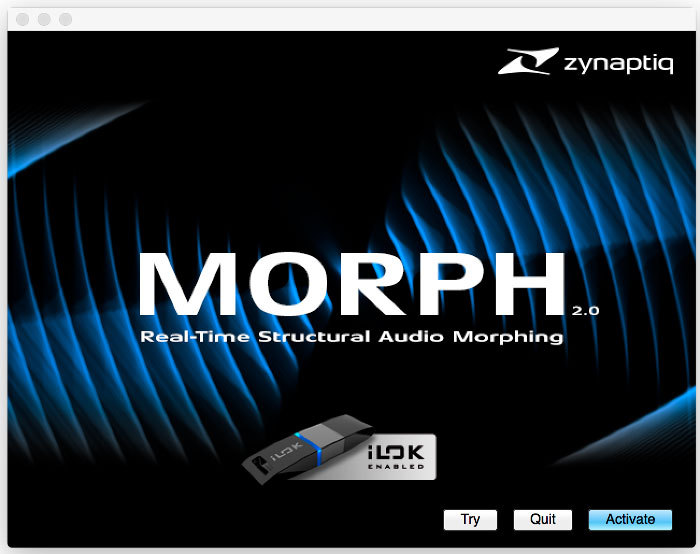
8. Enter your activation code (from your Zynaptiq confirmation email) and click 'Next'.
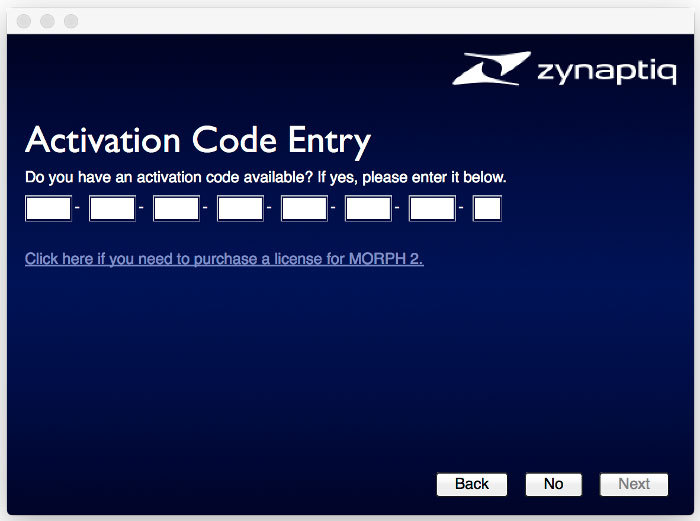
9. Log into your iLok account by entering your User ID and password, then click 'Next'.
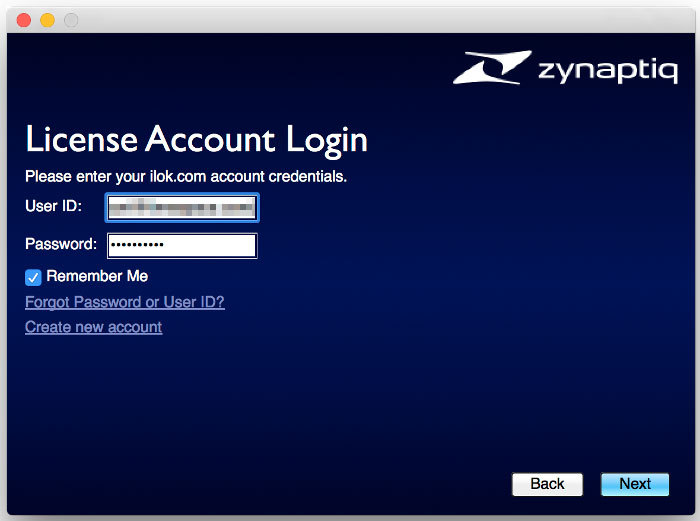
10. Once you have logged into your iLok account, you will need to select your iLok activation location - you can either select your computer to activate to or your iLok key (optional). Select your desired location so it turns blue and press 'Next'.
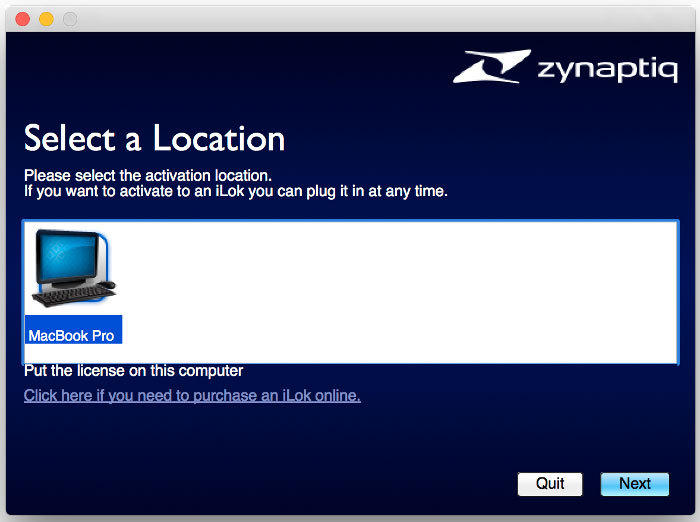
Your Zynaptiq product is now fully activated!










































































